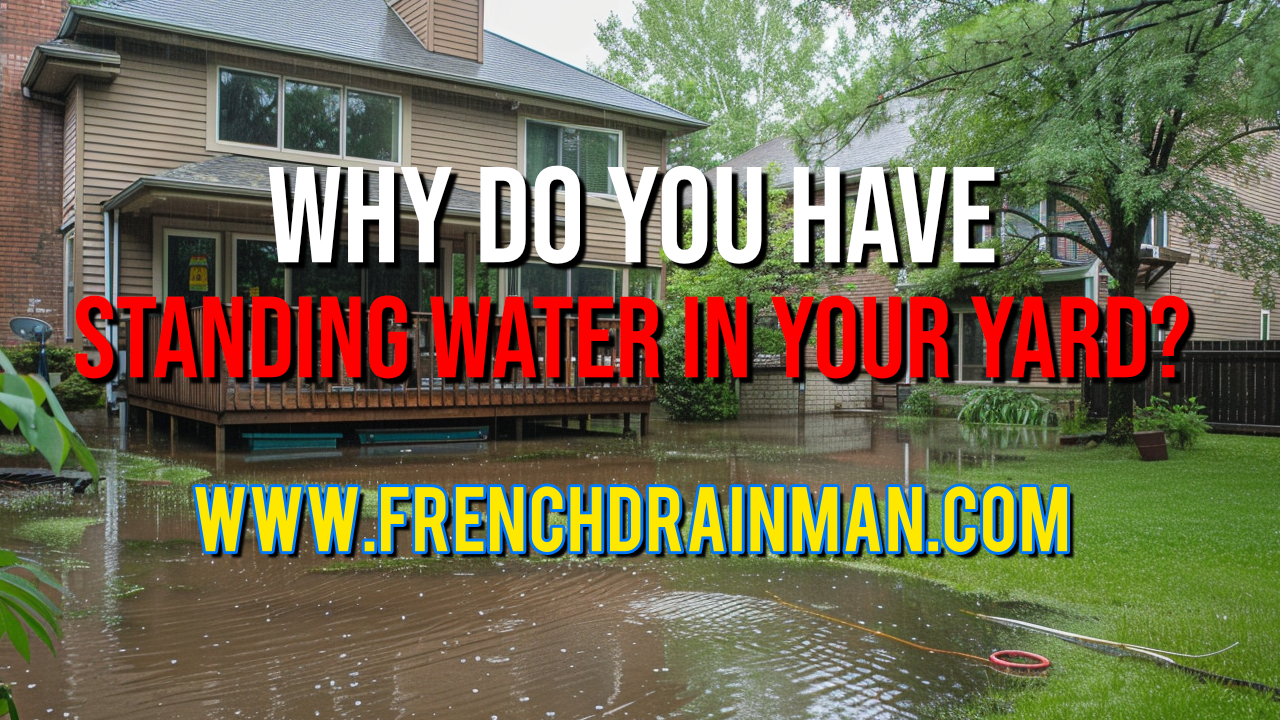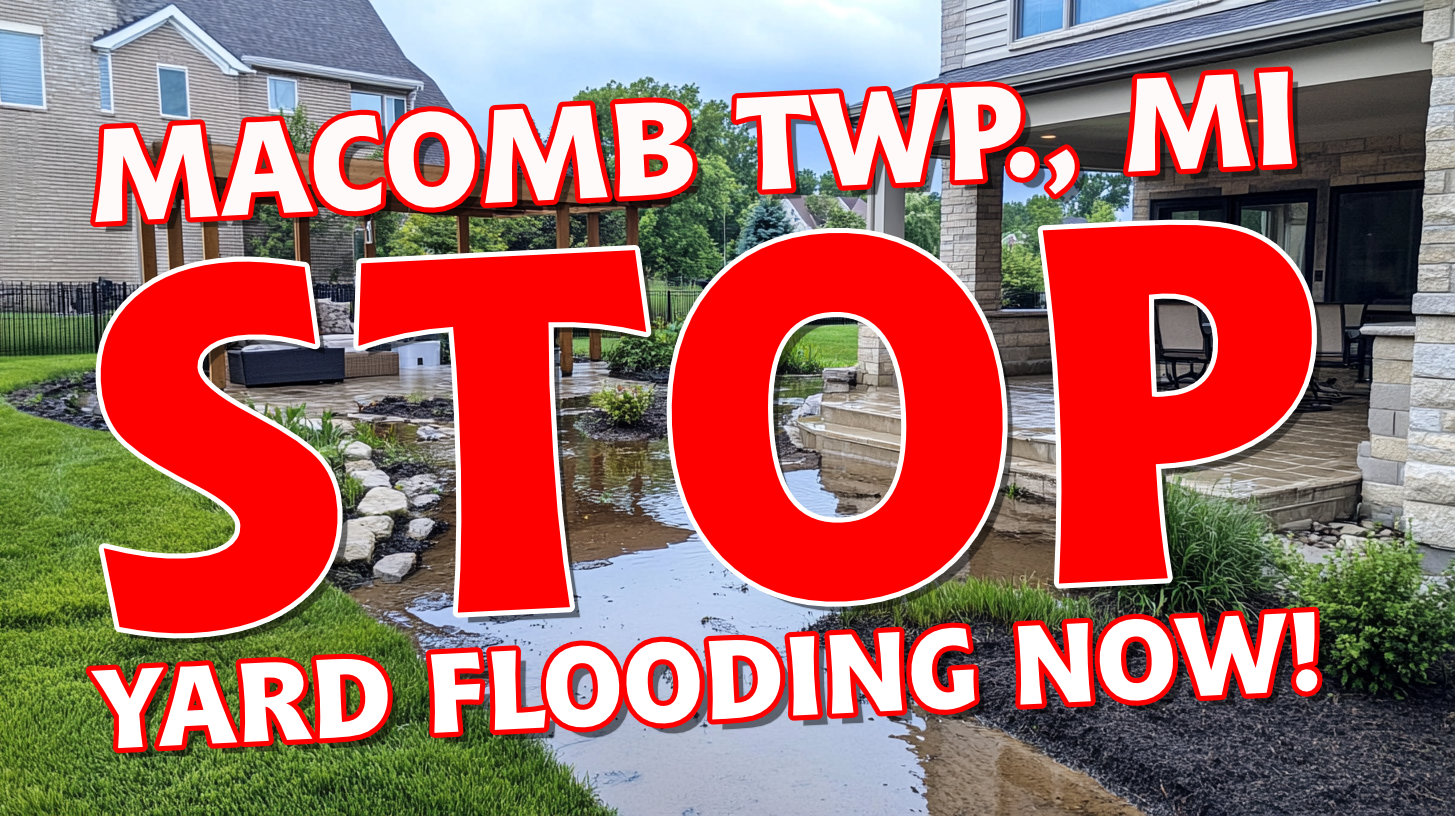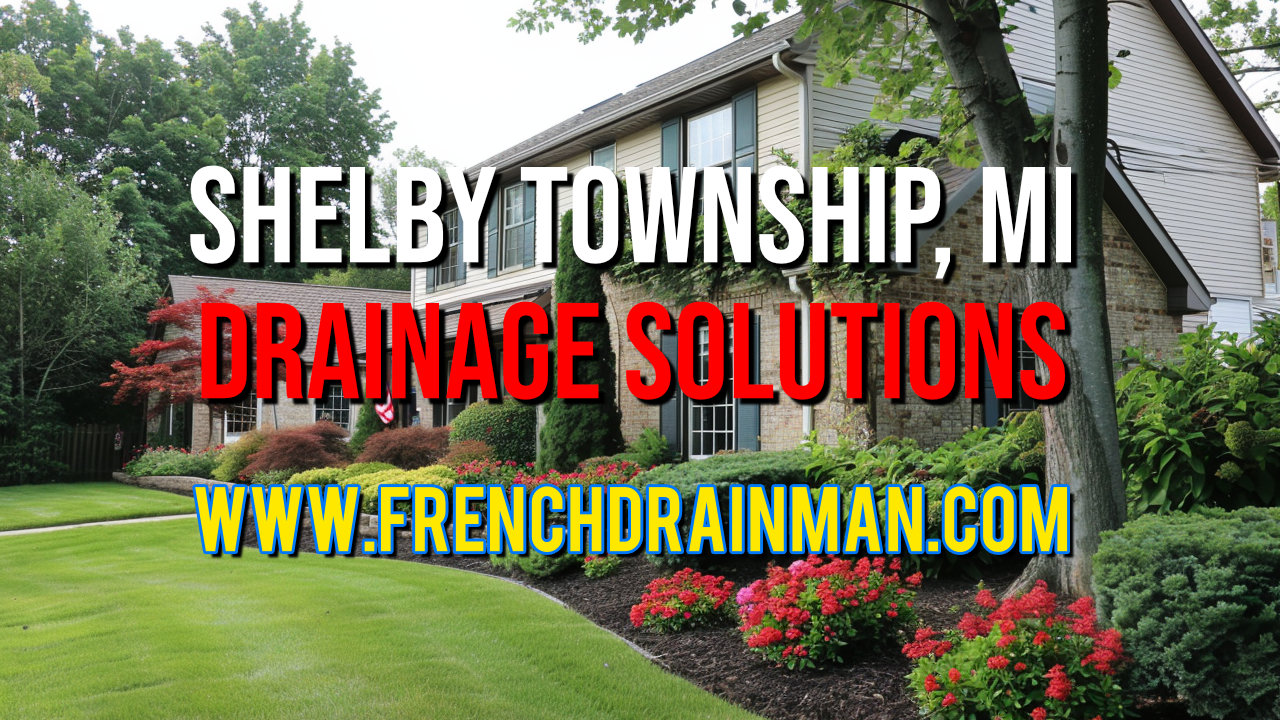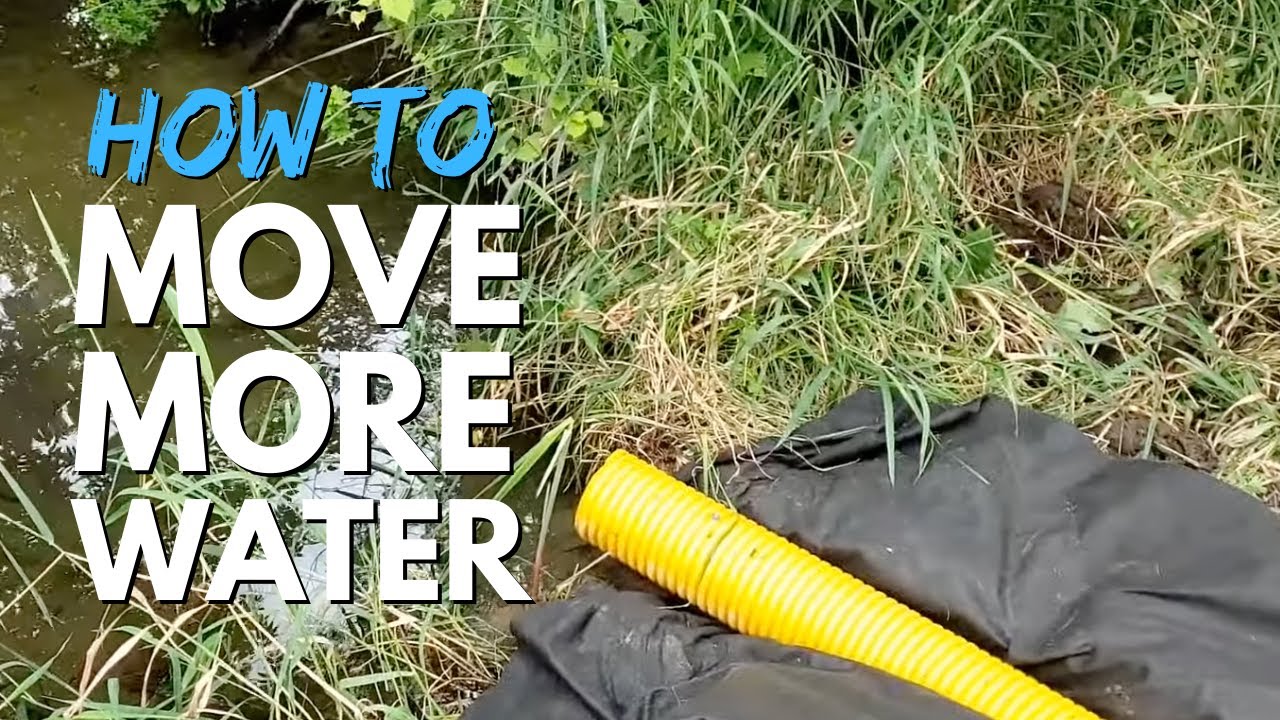Do You Have Standing Water in Your Yard?
Are puddles and soggy patches an ongoing problem in your yard? After it rains heavily, are you confronted by standing water that won’t go away? Not only is this unsightly but standing water also creates breeding grounds for mosquitoes and potentially damages your foundation. If this sounds familiar, now may be the time to address drainage issues in your yard and get water flowing properly.
Understanding why standing water accumulates in your yard is the first step toward eliminating it. Possible issues could include how it’s graded, soil composition, or even blocked drains. Don’t worry; we will cover all the most commonly associated sources and solutions that will allow you to take back control over your outdoor space!
Understanding the Basics of Yard Drainage
Proper yard drainage is vital to maintaining the health of your landscape and home’s structure and proper functioning. Without effective drainage systems, water can accumulate and create numerous issues. We will explore some fundamental concepts related to yard drainage that will help you understand how it should operate as intended and why sometimes it doesn’t.
Grading and Sloping
One key component of adequate yard drainage is proper grading. Grading refers to the slope of your land, which should ideally direct water away from your home and towards designated drainage areas. A well-planned slope ensures water flows naturally without pooling or saturation issues—one standard recommendation is to be at least two percent away from the house foundation and at least ten feet away from the foundation.
Runoff and Collection
After rainfall, runoff water runs over your yard’s surface and flows downward. Proper drainage systems manage this runoff to prevent accumulation. This involves natural slopes and strategically positioned drain features like gutters, downspouts, and catch basins, which collect and direct it away from high-risk areas.
Permeability and Soil Type
Soil permeability is integral to drainage efficiency, with permeable soils such as sand allowing water to drain quickly. In contrast, clay-rich soils retain it, slowing its drainage considerably. Understanding your soil type is vitally important, as this determines which drainage solutions will best serve your yard – for instance, sandy soils may require different approaches than clay ones to absorb efficiently and runoff water from rainstorms and other sources.
Drainage Systems
In addition to natural drainage through soil and grading, artificial drainage systems like French drains, dry wells, and channel drains may also be installed to aid water management in areas prone to heavy rainfall or where natural soil permeability is limited.
As mentioned above, understanding these fundamental aspects of yard drainage will assist you in diagnosing issues and devising practical solutions. From minor puddles to more severe water accumulation issues, starting here will guide your efforts in creating a dry and healthy outdoor space.
Soil Composition and Its Impact
Your yard’s soil type plays a crucial role in water draining, significantly influencing whether standing water is present. Different soil types have various capacities for absorbing and retaining water, impacting everything from the health of plants to your foundation’s stability. Understanding its characteristics is paramount to effectively managing drainage issues in your garden.
Types and Characteristics of Soil Drainage Systems
Clay Soil
Clay soil is composed of very fine particles and has a poor draining quality. It holds onto moisture much longer than other forms, resulting in waterlogging or prolonged dampness in your yard. While its nutrients nourish plant life, its poor drainage can harm plant roots and cause structural issues near home foundations.
Sandy Soil
In contrast with clay soil, sandy soil contains much larger particles that allow water to drain off quickly, thus preventing accumulation. Unfortunately, however, rapid drainage also means it holds less nutrients efficiently, which can compromise plant health and lead to increased runoff.
Loam Soil
Loam soils are ideal for most gardening and landscaping applications because their characteristics strike a perfect balance between clay and sandy soils, providing drainage without waterlogging while retaining enough moisture and nutrients to support robust plant growth.
How Soil Affects Yard Drainage Solutions
Your soil type determines your yard’s most efficient drainage solutions, such as amendments to improve its structure or installing French drains or raised garden beds to manage excess water. Conversely, sandy soils may require strategies for increasing water retention, such as adding organic matter or using mulches.
Testing and Amending Soil
A simple soil test can reveal much about its composition, helping guide decisions about amending or selecting drainage solutions. Organic matter such as compost can improve clay soil’s drainage capacity by breaking up dense particles and increasing porosity; on sandy soils, organic matter helps increase nutrient retention and water retention.
Homeowners who understand the relationship between soil composition, drainage, and landscape design can take proactive steps to address issues related to standing water. Customizing landscaping and drainage strategies according to your specific soil type maximizes their effectiveness and ensures their long-term health and beauty in outdoor spaces.
Landscaping and Garden Design Flaws
Landscape design is key for keeping water out of your yard and maintaining proper drainage. Still, sometimes, common design flaws may unwittingly contribute to water accumulation, resulting in soggy lawns, poor plant growth, and even damage to structures on your property. Understanding these design flaws will allow you to identify potential issues in your backyard and guide any necessary adjustments or redesigns.
Grading and Sloping Issues in Construction Projects
One of the biggest mistakes when it comes to landscaping is improper grading. If the slope of your yard funnels water towards your home or creates low spots that collect rainwater, they could become pooled pools of moisture that accumulate over time. A proper landscape grading should gently slope away from buildings and structures while channeling rainwater towards appropriate drainage areas or storm sewers for disposal.
Subpar Drainage Systems Exist
Landscape designs without adequate drainage solutions quickly become problematic. Essential elements like French drains, trench drains, and simple swales may go amiss in their design and implementation. These systems redirect excess water away from yards prone to heavy rainfall, thus significantly improving water management. Utilizing strategically placed drainage solutions will only further your yard design’s success!
Non-porous Surfaces and Materials
Water that seeps naturally into the ground cannot seep into large expanses of concrete or asphalt, leading to increased runoff, which in turn overwhelms your yard’s drainage capacity. Implementing permeable paving options or adding green spaces between hardscapes can significantly improve water absorption while decreasing runoff.
Installation and Selection of Plants
Plant types and placement can have an enormous effect on yard drainage. Plants requiring too much water may contribute to soil saturation, while others might not absorb enough to help manage moisture levels effectively. Furthermore, placing them where water tends to collect can cause root rot or other health concerns; choosing appropriate species for your yard’s conditions and placing them strategically to improve water management will create a healthier and more attractive landscape.
Overseeing Elevation Changes
Neglecting elevation changes when designing your garden design can result in water flow issues. By creating raised beds or terracing terraced areas, water flow issues may be managed more effectively, helping prevent erosion and runoff control.
Addressing common landscaping and garden design flaws is one way to significantly enhance drainage in your yard. Guided by these principles, regular reviews and adjustments of your landscape setup will ensure an aesthetically pleasing yet functionally practical outdoor space.
Effects of Weather and Seasonal Changes
Weather patterns and seasonal variations play a vital role in ensuring the effectiveness of your yard’s drainage system. Understanding the effects of different climate conditions on water accumulation is essential for effective landscaping to avoid potential issues with standing water. This section will explore how climate shifts may exacerbate standing water issues while offering strategies for adapting landscaping.
Heavy Rainfall
Heavy rain can quickly overwhelm a yard’s drainage capacity if its ground is saturated or the drainage system is ineffective. This is especially problematic during periods of intense precipitation when too much water may not percolate through soil quickly enough and pool on surfaces, potentially resulting in surface runoff and pooling. This is particularly problematic in regions with compacted or clay-heavy soil.
Effects of Snow and Ice
Snow and ice accumulation in colder climates can significantly impact soil structure and drainage efficiency, altering compactness over time and impacting drainage efficiency. Water that accumulates can freeze, expanding when it thaws to leave gaps in its wake when thawed. This process alters compactness over time, improving or worsening drainage efficiency depending on whether compacted layers become compaction or compactness increases over time. Furthermore, melting snow produces huge volumes of water quickly, putting pressure on drainage systems’ capacity and creating additional challenges to draining systems’ capacity.
Drought and Hardened Soil
Long periods of drought can harden soil, decreasing its permeability. When rain does return after such drought, hardened soil may not absorb it efficiently, leading to increased runoff and pooling. This phenomenon is most prevalent in regions with sandy or silty soils, which harden quickly when dried out and fail to reabsorb water efficiently.
Vegetation Changes with Seasonality
Your yard’s health and the type of vegetation can affect drainage. Deciduous plants that shed their leaves each autumn may block drains and reduce surface area for evaporation, increasing the chances of standing water. Furthermore, seasonal growth cycles mean water uptake can vary yearly and significantly change soil moisture levels.
Landscaping for Weather Conditions
Implement adaptable landscaping features to combat weather and seasonal changes. These can include creating rain gardens in areas prone to pooling to absorb excess rainwater effectively; increasing organic matter in soil can enhance absorption capabilities as well as resistance against compaction; and, for areas with snow cover, clearing drainage paths of debris before winter can help avoid water logging as the snow melts away.
By considering weather and seasonal variations, you can better prepare and adapt your yard to manage various environmental conditions. Strategic landscaping solutions will enhance drainage and help safeguard against water-related damages throughout the year.
Structural Issues and Their Consequences
Structural features on your property, such as buildings, driveways, and patios, play a crucial role in how water flows through your yard. However, when not designed or maintained correctly, these structures can contribute to standing water issues that result in poor drainage in the yard. This section explores common structural problems that lead to poor drainage and guides how to address them.
Impermeable Surfaces
One of the primary contributors to standing water is impervious surfaces that don’t allow water to soak into the ground, like concrete patios, asphalt driveways, and other hard surfaces that don’t permit soak-off during rainstorms. Such surfaces must be managed with adequate drainage solutions, such as channel drains or graded landscaping, to direct water away from them and prevent the pooling of excess liquid.
Poorly Installed Downspouts and Gutters
Gutters and downspouts divert roof runoff away from your home’s foundation. Still, if they are improperly placed or blocked by debris, water could accumulate near their source and potentially cause foundation issues or landscape erosion. Ensuring gutters are clean and downspouts extend far enough away from the house for effective water management is critical for efficient water management.
Landscape Features and Barriers
Structural landscape features like retaining walls, garden borders, and raised beds can act as barriers that obstruct the natural flow of water through your yard. Without proper planning of drainage strategies to address them, these features could trap excess moisture in certain parts of your yard if left without weep holes or drainage pipes to pass it along more freely or redirect it. It’s crucial that weep holes or drainage pipes be integrated into these structures to allow excess liquids to pass through or be directed appropriately.
Foundation Complications Your home’s foundation can enormously affect yard drainage. Suppose the surrounding soil has not been graded adequately, or your foundation has settled unevenly. Excess water may accumulate around its base instead of draining away properly, causing standing water and moisture problems in your basement or crawl space. This may even result in mold development!
Addressing Structural Drainage Issues
To address structural drainage issues, start by evaluating where rainwater tends to collect after each rainstorm and consider ways to regrade areas where pools form, install additional drainage solutions, or retrofit existing structures with features that facilitate better water management. Consulting with a professional may offer insights into more complex modifications to resolve persistent drainage problems.
Understanding and addressing structural issues within your yard can significantly improve drainage, protecting it from potential water damage while creating a healthier landscape.
Innovative Solutions to Prevent Standing Water
Innovative drainage solutions can be essential in managing standing water effectively in your yard. They can enhance traditional drainage systems and add aesthetic value. In this section, we discuss various innovative strategies you can employ to manage excess water efficiently.
French Drains
French drains can provide an effective solution to areas that experience persistent standing water issues. Composed of a trench lined with gravel and perforated pipe designed to redirect surface and groundwater away from certain areas, French drains enable water to be captured before it pools on the surface, ensuring its safe redirection toward an appropriate exit point.
Rain Gardens
Rain gardens offer an eco-friendly solution to drainage issues and an attractive landscape feature. Placed within natural or engineered depressions, they feature native shrubs, perennials, and flowers that thrive in wet environments. These plants absorb excess rainwater while filtering pollutants out for cleaner waters, reducing runoff and improving water quality.
Permeable Pavers
Substituting traditional concrete and asphalt pavers with permeable pavers is an elegant yet effective way to manage runoff. Permeable pavers allow water to percolate through their surface into the ground below, significantly decreasing standing water while replenishing groundwater supplies. They’re great for driveways, walkways, and patios and come in various materials and styles that complement any landscape design scheme.
Dry Wells
A dry well collects excess rainwater from roof gutters or over-burdened drainage areas and disperse it below the surface, preventing pooling. They are accommodating in properties with limited surface space or where direct runoff to storm drains would not be preferable; additional drainage solutions such as dry wells may enhance effectiveness even further.
Green Roofs
Installing a green roof involves covering your roof with vegetation that absorbs rainfall and reduces runoff. It also provides insulation, cuts energy costs, and increases the aesthetic appeal of buildings. Green roofs require structural considerations but have significant long-term advantages that should not be neglected.
Automated Drainage Systems
Install automated drainage systems with sensors that detect moisture levels and activate pumps or open valves when necessary. These systems provide hands-off water management solutions tailored to your landscape’s unique requirements. These solutions offer customized water solutions without being subjected to manual drainage management.
Utilizing one or more innovative solutions can significantly decrease the risk of standing water in your yard. By selecting an effective combination of techniques, you can ensure your outdoor spaces remain dry, functional, and beautiful no matter the weather conditions.
DIY Tips vs. When to Call a Professional
DIY solutions may be effective for minor drainage issues such as small puddles in garden beds or runoff from downspouts, such as small puddles in garden beds and mild runoff from downspouts. Here are a few suggestions:
Install Underground Buried Downspouts
Buried downspouts offer an effective means of diverting roof runoff away from your home’s foundation, which above-ground extensions cannot. When properly routed and routed for safe discharge, they can prevent soil erosion and foundation water damage and provide better control.
Create Swales
Swales are shallow trenches that follow the contour lines of your landscape and can be filled with gravel or soil to redirect water away from problem areas.
Install Catch Basins
Catch basins can be connected to your gutter system to capture roof runoff in areas with heavy rainfall, making them especially helpful.
Each solution can be enhanced by high-quality products available from French Drain Man’s online store, including everything from pipes to catch basins – ideal for DIY enthusiasts.
When Should You Contact a Professional?
Some drainage problems may be too complex or extensive for an amateur DIY approach, particularly if they involve multiple properties, large scale landscape grading projects, or persistent water accumulation that compromises structural integrity. At these points, professional help should be sought:
Serious Water Logging
If large portions of your yard remain soggy or water is pooling around your home’s foundation, professional advice should be sought immediately.
Installing French Drains
While experienced DIYers may feel confident installing French drains themselves, professional installation ensures the job is done perfectly from start to finish, taking into account depth, slope, and materials needed.
Legal and Compliance Considerations
Depending on where you reside, altering landscape features or installing specific drainage systems may require permits and follow local regulations.
French Drain Man offers expert consultation and installation services to residents in southeast Michigan that guarantee long-lasting solutions to complex drainage issues. Their years of experience help ensure their expertise can help your property remain dry and damage-free.
Visit French Drain Man’s Online Store
Do You Need Top-Quality Drainage Solutions or Expert Advice on an Issue? At French Drain Man, our online store is filled with top-quality drainage products used by professionals so that DIY enthusiasts and those needing professional assistance can access only the highest-grade products on the market. Visit Us Now
Understanding your capabilities and when professional assistance should be sought can help you confidently handle any drainage issue on your property. While DIY projects may prove rewarding and cost-effective, professional involvement should always be sought for more severe or complex problems that threaten the integrity of your landscape.
Take Action Against Standing Water in Your Yard Today!
Effectively managing standing water in your yard is crucial to its health and beauty and to protecting its structural integrity. We’ve examined numerous causes for standing water accumulation, including soil composition, landscaping design flaws, and weather impacts. By understanding these components and taking appropriate steps, you can significantly enhance drainage in your property.
If your yard struggles with standing water, don’t wait for the problem to worsen. Take immediate steps with DIY solutions such as installing underground downspouts, creating swales, and setting up catch basins. These solutions could immediately affect how well water flows off your land.
However, consulting a professional is often recommended for more complex drainage problems or when unsure how best to approach them. French Drain Man provides advanced drainage solutions in southeast Michigan and expert advice. It is ready to meet any drainage challenge with long-lasting solutions that ensure success and durability.
Visit Our Online Store
DIY enthusiasts outside southeast Michigan and those attempting smaller DIY projects alone should stop by French Drain Man’s online drainage store for high-quality drainage products to help get the job done correctly. From French drain pipe and filter fabric to catch basins and pop-up emitters. We offer everything needed at French Drain Man.
Let’s Get Started!
Don’t allow standing water to ruin your outdoor spaces! Take action today by visiting French Drain Man’s online store or contacting us for professional consultation services for your drainage needs. French Drain Man offers reliable solutions that protect your home and yard from floodwaters. Call us today at .
Want to Learn More About Drainage Solutions?
Subscribe to the French Drain Man YouTube Channel!








